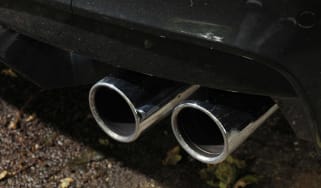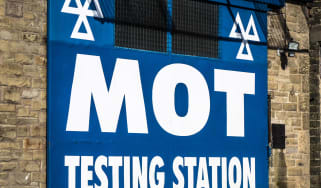The Dartford Crossing: how to pay the Dart Charge toll and appeal a fine
Our Dartford Crossing guide explains when and how to pay the Dart Charge, how much it costs and how to appeal a fine
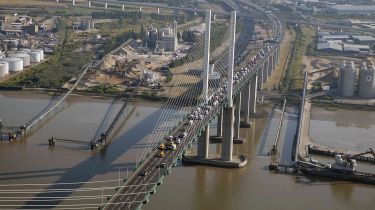
The Dartford Crossing is one of the busiest stretches of road in Britain; it spans the River Thames between the counties of Kent and Essex, and is a major bypass of Greater London. The crossing sits along the eastern section of the M25 where the motorway briefly becomes the A282 to cross the river. A toll system known as the Dart Charge is in place and must be paid by vehicles making the crossing in each direction.
The Dartford Crossing is a major part of the UK road network that helps connect Britain to Continental Europe, so is vital for business and holidaymakers alike. Over the years, there have been plenty of changes to the Dartford Crossing, one of the biggest being the removal of the toll booths and switching to a cashless payment for the Dart Charge in November 2014, and in October 2019 the government announced that the Dart Charge would remain a permanent feature – in a bid to reduce congestion and manage traffic.
The crossing, whether you're heading northbound through the tunnels, or southbound over the QEII bridge, operates the Dart Charge system of electronic payment, and uses automatic number plate recognition (ANPR) to register every vehicle that uses the crossing.
This guide explains how and when to pay the Dartford Crossing toll, how much it costs, what happens if you get a fine and how to appeal it – we have even included a little Dart Charge history lesson at the bottom of the page.
Dart Charge: crossing times and deadline to pay
The times you are required to pay the Dart Charge are fairly simple, you must pay to use the Crossing between 6am and 10pm every day, including weekends and bank holidays.
Outside of these times, vehicles are free to use the crossing. You can either pay in advance or after you have made the crossing – either way, you must pay your Dart Charge by midnight the day after you cross and failing to do so will result in a fine, but more on that later.
Dart Charge prices: motorbikes, cars, trailers, minibuses and motorhomes
Take a look at the table below for all the Dart Charge prices for motorbikes, cars, trailers, minibuses and motorhomes...
| Type of vehicle | One-off payment | If you have an account |
|
Motorbikes, mopeds and quad bikes
|
Free
|
Free
|
|
Cars (incl. trailers)
|
£2.50
|
£2.00
|
|
Motorhomes
|
£2.50
|
£2.00
|
|
Minibuses (9 seats or less incl. the driver)
|
£2.50
|
£2.00
|
|
Buses, coaches vans and other goods vehicles with two axles
|
£3.00
|
£2.63
|
|
Buses, coaches vans and other goods vehicles with more than two axles
|
£6.00
|
£5.19
|
It is worth noting that the current crop of pick-up trucks are classified as two-axle goods vehicles, so pay the higher £3.00/£2.63 charge. There are also discounts for local residents and disabled drivers who get free UK car tax can cross for free, more on both below.
Dartford Crossing fines
Should you forget to pay for your crossing before the deadline, you will be fined £70 and given 28 days to pay. If you pay your fine within 14 days, the amount you pay is reduced to £35. However if you don’t pay, the fine will be increased to £105, and you will still have to cough up the cost of the crossing as well.
In some instances, drivers may be given the benefit of the doubt for a first offence, and have their fine waived. To apply for this, drivers must visit the Dart Charge website, following the instructions provided.
How to appeal a Dart Charge
Similar to other penalty charge notices (PCN), if you wish to appeal the fine, you can do so online, but you only have 28 days to appeal once your fine has been issued. You will be given the chance to submit any evidence to show why you were wrongly charged, such as your vehicle being in a different place at the time, or a receipt of the transaction proving you paid. Should your appeal fail, the only other option (besides paying) is to go to an independent tribunal.
Dart Charge exemptions and discounts
There is just the one exemption for paying the Dart Charge, and that is if you are driving a vehicle which is excluded from vehicle tax due to you being disabled. Should this be the case, you do not need to do anything as your vehicle will be checked automatically when making the crossing.
Residents of Dartford or Thurrock qualify for a Dart Charge discount. If you are a resident and plan on using the crossing frequently, you can pay £20 for unlimited crossings for a year. Or, alternatively, if you will only be using it occasionally, you can pay £10 for 50 crossings, plus 20p for each additional crossing. Residents can apply online or by post.
Eligible drivers will need to provide proof of residency, as well as providing copies of your vehicle's V5C log book, a copy of your driving licence and a recent utility bill. You will need to set up an account in order to qualify for the discounts and pay for crossings in advance. The offer is limited to one vehicle per application, and goods vehicles are only eligible if they are privately owned.
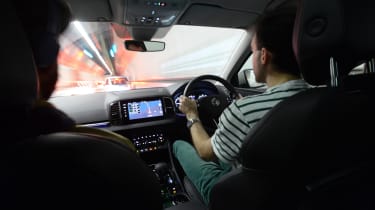
If you are neither a resident nor disabled, by setting up a Dart Charge account and pre-paying in advance of crossings, you can get discounts of up to 20 per cent, depending upon your vehicle.
How to pay the Dart Charge
As you approach the Dartford Crossing from either direction, there are plenty of road signs that inform you about ways to pay now that the booths have been removed. These start to appear well before the previous junctions, and if you're in a lane approaching the crossing with a large 'C' painted in the road, then that means you're in a charge area.
Motorists have three ways to pay for using the tunnel or bridge: online, over the phone, or at a shop with a Payzone terminal.
Pay online
The Dart Charge website is the simplest way to pay. Enter the registration of your vehicle online, then you are given the option to pay for the number of crossings you have done.
One benefit of the Dart Charge is that you can pay for crossings in advance, as any crossing payments you make are valid for up to 12 months if they remain unused. So for example, if you are planning a round trip that will use the Dartford Crossing twice, then you can pay for two crossings for your vehicle. But if you don't use any of the crossings for whatever reason, they are then credited against your car's registration for 12 months.
If you want to check whether a crossing has been paid for, you can check for paid crossings, by cross-referencing your payment receipt against your car's registration on the website. This gives a breakdown of dates and times when crossings have been recorded, so you can see if you need to pay for any additional crossings you may need.
Pre-pay account
For a pre-pay Dart Charge account, you just need to register your details and a vehicle, top-up your account with £10, and you're on your way. With an account you get a full breakdown of your crossing history, your payments (you can top-up manually or set an auto top-up that credits your account when it dips below a certain amount), and your monthly statements.
You can add up to 20 vehicles to the account, so it's perfect for fleet operators, although it's so simple to use it's worth just setting up an account for the savings, even if you only have one car. If you top-up manually, you will automatically get an email informing you when your balance has dipped below £10 as a reminder to top-up your account.
Pay over the phone
You can pay over the phone using the automated payment system at 0300 300 0120. This works in the same way as paying over the phone for parking, and you can manage your account in the same way as you can online. For the hard of hearing, the Textphone service is available at 18001 0300 300 0120.
Pay by post
You can pay for a crossing in advance by sending this form to the following address: Dart Charge Customer Services, PO Box 842, Leeds LS1 9QF.
Pay in person
If you can’t pay online, feel uncomfortable paying over the phone or don’t have a debit or credit card then you need to visit a Payzone outlet. These are usually located in newsagents – identifiable by the Payzone logo – so there should be one near you – check at payzone.co.uk – and they will accept cash payments. Again, you'll need your car's registration, you can pay in advance, or you have until 12 midnight of the following day to pay.
If you want to pay as soon as you have crossed, there is no easy way of doing so, because the nearest Payzone outlets are off the M25. If you're heading northbound, there's no point in going to Thurrock Services at Junction 31, because there is no facility to pay there. The nearest Payzone locations are as follows:
- Northbound (after crossing): Whyte Convenience, 19 London Road, JL House, Purfleet, RM19 1RJ.
- Southbound (after crossing): Riverview Newsagents, 13 Riverview, Henderson Drive, DA1 5LB
Why do we still pay the Dart Charge?
Originally, the Dartford Crossing was supposed to become free to use once the cost of building it had been paid off. In 1999, the Government announced charging would be stopped by the end of 2003. In 2001, however, the Government backtracked on this promise. The cost of building the crossing was fully recovered in 2002, but charges continued and were actually increased in 2014.
The reason for charging still being in place is to do with traffic levels, the Government says. The Dartford Crossing was designed and built to carry 136,000 vehicles a day. Today, though, it sees as many as 160,000 vehicles a day, despite charging still being in place. The Government estimates that lifting charges would cause a 17 per cent spike in traffic levels on the crossing. In October 2019 the government announced that the Dart Charge would remain a permanent feature as a way to manage traffic levels.
Dartford Crossing History
The Dartford Crossing is part of the M25 orbital motorway around London, although it predates the motorway by over 30 years. The first tunnel under the River Thames (which today is the most westerly bore) was started in the 1930s, but the outbreak of World War II postponed construction and it wasn't opened until 1960. By then, Essex and Kent County Councils had managed to successfully lobby the Ministry of Transport to establish a toll for using the crossing – this has remained in place ever since, although today it's referred to as a charge rather than a toll.
The second tunnel was announced in 1970, but construction wasn't completed until 1980, after funding from the EEC guaranteed its completion. When it was opened, the combined capacity of both tunnels was 65,000 vehicles per day. The M25 was linked to the Dartford Crossing in Essex in 1982, with the Kent side joined up four years later, by which time 79,000 vehicles per day were using the two tunnels.
It took less time for the Queen Elizabeth II bridge to be constructed. Work was started in 1988, and it opened in 1991. The bridge was built by a private consortium, and at one time the tolls from the crossing were supposed to be in place until the construction of the bridge had been paid for. But a Transport Act in 2000 changed the toll to a charge that could continue to be levied, and from 2003 users have been paying a crossing charge rather than a toll.
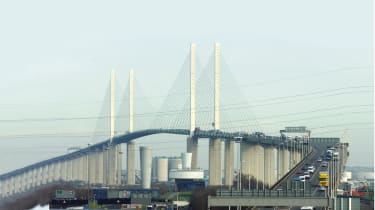
The last major update for the Dartford Crossing was the removal of the toll booths, which were located on the Kent side of the Thames. These were removed in 2014 in an effort to reduce congestion at peak hours. The effectiveness of this change is open to question, especially as soon after the toll booths were removed, work started on improving Junction 30/31 of the M25, resulting in queues back through the Dartford Tunnel, and cancelling out the effect of removing the booths.
Also, the Automatic Number Plate Recognition (ANPR) cameras that are now used to log drivers' journeys has come under fire. Complaints about the ANPR system have included allegations that it has incorrectly charged vehicles registered for a Dart Charge account, has not been able to read foreign number plates, and various errors within the accounts system.
While the Dartford Crossing has been amalgamated into the M25, it's actually classified as the A282, which means traffic that isn't permitted on motorways is allowed to use it. Either way it's a major route for traffic heading from the UK to Europe via the Channel Tunnel and the busy ports of Dover and Felixstowe, and the average number of vehicles using it each day is 130,000, more than double the number of 1980.
Going into London? Find out about the London congestion charge or the Ultra Low Emission Zone (ULEZ) here...
Find a car with the experts







